Makes and Models
Is a Sedan or SUV Better for a Family Car?
When it comes to choosing the ideal family car, the debate between sedans and SUVs has long been a topic of discussion. Both vehicle types offer their own set of advantages and disadvantages, catering to different needs and preferences. Today we’re comparing the two to determine which is better suited for family use.
Space and Seating
SUVs typically boast larger cabins and higher seating capacities compared to sedans. This means SUVs are often preferred by families needing extra space for passengers and cargo. With the ability to accommodate up to seven or even eight passengers in some models, SUVs offer greater flexibility for larger families or those who frequently carpool.
On the other hand, sedans usually have limited seating capacity, typically accommodating five passengers. While they might be sufficient for smaller families, sedans might feel cramped during long journeys or when carrying bulky items.
Versatility
SUVs are renowned for their versatility, thanks to features like foldable rear seats and ample cargo space. This makes them suitable for various family activities, such as camping trips, sports events, or hauling large items.
Sedans, with their more compact design, might struggle to provide the same level of versatility. However, sedans often have larger trunks compared to similarly sized SUVs, offering ample space for groceries, luggage, or everyday items.
Fuel Efficiency
In general, sedans tend to be more fuel-efficient than SUVs due to their lighter weight and aerodynamic design. Families concerned about fuel costs or environmental impact might lean towards sedans for their superior fuel economy. However, advancements in hybrid and electric SUV technology have narrowed this gap in recent years, offering eco-conscious families alternative options without sacrificing space and utility.
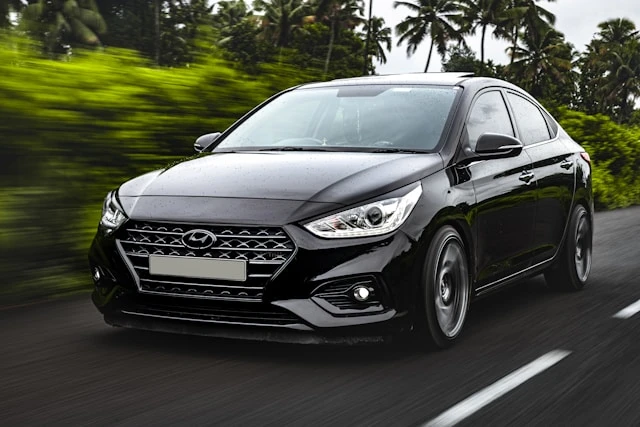
Driving Experience
Sedans are typically praised for their smooth handling, precise steering, and lower centre of gravity, resulting in a more car-like driving experience. This can be advantageous for families who prioritise comfort and agility, especially in urban environments or tight parking spaces.
On the other hand, SUVs often provide a commanding view of the road, along with enhanced ground clearance and all-wheel-drive capabilities, making them better suited for rough terrain or adverse weather conditions.
Safety
Both sedans and SUVs come equipped with a range of safety features designed to protect occupants in the event of a collision. However, SUVs generally have a higher stance, providing better visibility and potentially reducing the risk of certain types of accidents, such as rear-end collisions.
Additionally, SUVs often incorporate advanced safety technologies, such as blind-spot monitoring and lane-keeping assistance, which can further enhance driver awareness and accident prevention.
Cost
In terms of upfront costs, sedans tend to be more affordable than SUVs, making them an attractive option for budget-conscious families. Additionally, sedans typically have lower maintenance and insurance costs compared to SUVs, which can contribute to long-term savings. However, families should also factor in fuel expenses, as SUVs typically consume more fuel than sedans, potentially offsetting the initial cost savings over time.
In the end, the decision between a sedan and an SUV as a family car ultimately comes down to individual priorities and preferences. Families requiring ample space, versatility, and off-road capabilities may find SUVs better suited to their needs, while those prioritising fuel efficiency, driving dynamics, and affordability may opt for sedans.
Hot Hatch Heaven

If I wanted to buy a hot hatch in 2024, what would the best ones be? A hot hatch is considered hot because it is a small hatchback with plenty of get up and go, handles fast cornering really well (and thus is a hoot to drive), and also offers decent practicality to double up as an errand runner or commuter when you’ve stopped being a rapscallion at the traffic lights.
Back in the eighties, the VW Golf GTi, Renault 5 GT, Mazda 323 Turbo, Toyota Corolla GTi, Fiat Uno Turbo, and the Peugeot 205 GTi were the hatchbacks to go for if you wanted a relatively cheap to buy and quick little car that brought you smiles for miles. In fact, these were the cars that caused people to call this type of car a hot hatchback in the first place; they are still considered legendary classics.
The nineties saw other car manufacturers getting into a slice of the popular hot hatch pie, so the Ford Escort RS Cosworth, Ford Fiesta RS Turbo, Nissan Pulsar GTi, Peugeot 306 GTi, Renault Clio Williams, Honda Civic Type R, Lancia Delta Integral, and Subaru WRX joined the gang.
The decade following the turn of the century cemented the Honda Type R, the VW Golf GTi, the Subaru WRX, the Renault Megane R26, and the Ford Focus RS as the hot hatch quickies.
Recently, 2010–2020 have seen the VW GTi, the Renault Megane RS Trophy, Ford’s Focus and Fiesta RS models, and the Honda Civic Type R dominating the hot hatch arena. But today, what’s there to carry the hot hatch name on? There are plenty of hatchbacks, in fact, that allow the hot hatch dream to live on.
In 2024, some of the best little hot hatchbacks you can buy are cars like the AWD Toyota Yaris GR, offering great value for money, bringing a neat little 3-cylinder 1.6-litre petrol turbo engine to the party with a slick shifting 6-speed manual gearbox, a 0-100 km/h sprint time of 5.4 seconds, and a top speed of 230 km/h.
For similar money, Hyundai offers a hot hatch, namely their front-wheel driven i30N in 2.0-litre petrol turbo form, capable of whipping the 0–100 km/h sprint in 5.4 seconds and running on to a top speed of 250 km/h. They don’t just stop with the i30N because you can also try the smaller and equally fun Hyundai i20N.
There is still a sparkling new VW Golf GTi with front wheel drive and169 kW available for you to buy, but you can also purchase the even quicker Golf R. This AWD package tweaks the Golf GTi’s engine even further to pack a 250-kW punch that can send you from zero to 100 km/h in 4.6 seconds.
If you are after the quickest petrol-powered hot hatch of 2024, then the intense Audi RS 3 takes the cake. The RS3 runs with a rather special 5-cylinder, 2.5-litre turbo performance engine and Quattro AWD to put all that power to the ground. A 3.8-second 0–100 km/h sprint time says enough.
Honda’s Civic Type R is still doing the business in 2024 and is a very nice bit of kit that handles really well, using a sweet 6-speed manual gearbox, a front-wheel-driven chassis, and a free-revving 2.0-litre petrol turbo motor to do the job. A 0–100 km/h sprint can be done in 5.4 seconds, but the car will also happily run right up to 275 km/h.
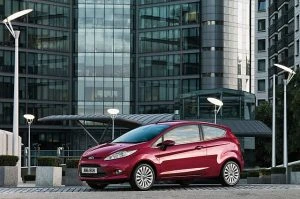
The 2024 Ford Fiesta ST is probably closest to the hot hatchbacks of old. The Fiesta ST is quick, well equipped, and has low running costs that help make it an affordable and great little daily driver.
Still some other fine petrol-powered hatchbacks for the hot hatch hunter include:
- Mercedes Benz AMG A45 (0-100 km/h, 4.4 seconds)
- BMW M135i (0-100 km/h, 4.6 seconds)
- Mini Hatch JCW (0-100 km/h, 6.0 seconds)
- Abarth 695 (0-100 km/h, 6.9 seconds)
- Cupra Leon (0-100 km/h, 5.7 seconds)
- Renault RS Trophy (0-100 km/h, 6.0 seconds)
EV hot hatchbacks:
- MG 4 XPower (0-100 km/h, 3.8 seconds)
- Cupra Born (0-100 km/h, 6.7 seconds)
- Abarth 500e (0-100 km/h, 7.0 seconds)
Of course, the decade’s not over yet, and I’m looking forward to seeing what the iconic hot hatches of the twenties will be.
New Suzuki Vehicles for 2024–2026
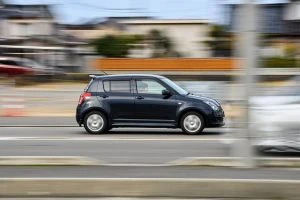
In the near future, Suzuki is looking to bring more hybrid technology into their mix of tricks. The current and soon to be available cars that Suzuki are delivering are exciting to look at, fun to drive, and are keeping pace with modern styling trends. Following Suzuki’s launch of the popular long-wheelbase (5-door) version of the boxy Jimny XL 4×4, Suzuki will be introducing at least another two new models in 2024. Hybrid technology is going to be part of Suzuki’s plan over the next year or two.
Despite the fact that CO2 gets pumped into horticultural green houses to enhance plant growth and production, hybrid vehicles will enable Australian new car buyers to enjoy genuinely fuel-efficient vehicles with low CO2 emissions for the first time. The fewer emissions, particularly of the toxic fume type that can cause respiratory problems, that get farted out into congested city environments the better, thus ensuring people can breathe easier as they leave the office to grab a coffee across the other side of the street or head around the block for a walk during lunch.
Suzuki’s lineup will continue to consist mainly of small cars and small SUVs (alongside Suzuki’s popular motorbikes, of course). There will continue to be the efficient petrol-only vehicles with their low emission rates; however, this year, mild-hybrid technology comes into effect. For those after a new car in 2024, Suzuki still offers buyers their brand-new Swift Hatchback. The 2024 Swift’s exterior looks familiar but is definitely smoother and sleeker than before and, inside the vehicle, there is bigger, more comprehensive touchscreen technology, along with an array of safety upgrades.
Of course, you could also buy yourself the fun little Suzuki Jimny 4×4 in three- or five-door form. These 4x4s are really popular, particularly for people needing a low-cost, go-anywhere type vehicle. These are truly capable 4WD SUVs that can happily tackle the toughest off-road terrain you can throw their way. The cute little Ignis, the dynamic Vitara range, and the stylish new S-Cross SUV are great efficient Suzuki vehicles that you can buy in 2024.
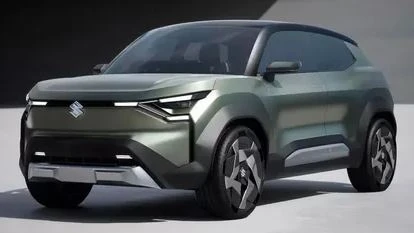
However, 2025/2026 will see Suzuki’s first electric vehicle (EV) model arrive in Australia: the Suzuki eVX. The small Suzuki EV SUV will be manufactured for numerous global markets, including Europe and Asia, with Australia’s introduction likely to be in 2025 or 2026. The Suzuki eVX concept was first revealed at Delhi’s Auto Show, India, in early 2023; it also received a public viewing at the Japan Mobility Show, Tokyo, in late October 2023. It is less than 4.5 metres long, about the same size as the recently facelifted Suzuki S-Cross SUV, and Suzuki suggests that the new eVX is targeting a 500 km driving range ahead of its launch. Equipped with dual electric motors, the Suzuki eVX is set-up well for delivering effective AWD traction should you require off-road action. Of course, Suzuki will also ensure it has fine on-road abilities as well. The eVX definitely looks futuristic and has that chunky, rugged look blended into the vehicle’s lines and shape.
Hybrids We’re Excited About For 2024
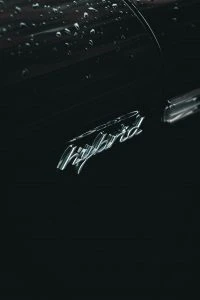
The pool of new hybrid vehicles from which a new car buyer can buy from has grown considerably over the last couple of years. The mainstay of hybrid manufacturers (e.g., Honda and Toyota) that have been in the hybrid game for over two decades are still providing us with some great vehicles; however, we have plenty of new hybrid options to choose from now.
Hybrids vehicles are vehicles that are powered by an internal combustion engine (ICE) but also have one or more electric motors to enhance a vehicle’s fuel economy, lower its overall emissions (gCO2/km), and add to the car’s performance. Hybrids also have a battery pack to source electricity for powering the electric motors. The battery is usually charged through regenerative braking and by the internal combustion engine, though some cars, like the Mitsubishi Outlander, are plug-in hybrids (PHEVs), meaning that their battery packs can also be charged up when not being driven, like a full electric vehicle (EV).
At the moment, hybrid vehicles are fantastic and make a lot of sense. For much of the time, they happily pootle about town on electricity alone (no emissions and no fuel usage). Then, when longer journeys are necessary (out of town) or if you need to tow something, a hybrid vehicle can make use of its ICE power and the country’s fuel network for taking you places far beyond the infrastructure for battery recharge.
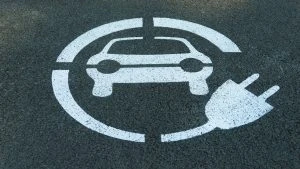
So, what new hybrid vehicles can we buy in 2024? I’ve endeavoured to break down the new hybrid vehicles according to their price bracket. There are actually over 70 new hybrid vehicles available today. See our review pages for more details on most of these, and we’re adding to our list of reviews all the time.
Up to $50,000
- GWM Haval Jolion SUV
- Hyundai Kona SUV
- Hyundai i30 Sedan
- GWM Haval H6 SUV
- Kia Niro SUV
- MG HS Plus SUV
- Subaru Forester SUV
- Toyota RAV4 SUV
- Toyota Yaris Cross Small SUV
- Toyota Camry Sedan
- Toyota Corolla Hatch
- Subaru Crosstrek SUV
- Toyota C-HR Small SUV
- Toyota Yaris Hatch
- Toyota Corolla Sedan
- Honda HR-V Small SUV
- Toyota Corolla Cross SUV
$50,000 to $75,000
- Peugeot 408 SUV
- Honda Civic Hatch
- Honda ZR-V SUV
- Honda CR-V SUV
- Mini Countryman SUV/Hatch
- Lexus NX SUV
- Toyota Corolla Cross SUV
- Subaru Forester SUV
- Toyota RAV4 SUV
- Honda Accord Sedan
- Nissan Qashqai SUV
- Toyota Camry Sedan
- Toyota Kluger SUV
- Cupra Leon Hatch
- Cupra Formentor SUV
- Lexus ES Sedan
- Lexus UX SUV
- Mitsubishi Outlander SUV
- Kia Sorento SUV
- Nissan X-Trail SUV
- GWM Tank 300 SUV
- Hyundai Santa Fe SUV
- Alfa Romeo Tonale SUV
- Mitsubishi Eclipse Cross SUV
- Kia Niro SUV
- MG HS Plus SUV
- Peugeot 308 Hatch
- Ford Escape SUV
$75,000 to 100,000
- Kia Sorento SUV
- Mazda CX-60 SUV
- Alfa Romeo Tonale SUV
- Peugeot 3008 SUV
- Volvo XC60 SUV
- Toyota Kluger SUV
- Peugeot 508 Wagon
- Lexus ES Sedan
- BMW 3 Series Sedan
- Peugeot 508 Hatch
- Mini Countryman SUV
- Lexus NX SUV
- Lexus RX SUV
$100,000 to $125,000
- Mercedes Benz GLC-Class SUV
- Lexus RX SUV
- Volvo XC60 SUV
- Audi Q5 SUV
- BMW X3 SUV
- Land Rover Discovery Sport SUV
- Land Rover Range Rover Evoque SUV
$125,000 to $150,000
- Jeep Grand Cherokee SUV
- Land Rover Defender SUV
- Land Rover Range Rover Velar SUV
- Volvo XC90 SUV
- Mercedes Benz E-Class Sedan
- Lexus RX SUV
$150,000 to $200,000
- Lexus LM People Mover
- Audi Q8 SUV
- Porsche Cayenne SUV
- BMW X5 SUV
- Land Rover Range Rover Sport SUV
$200,000 and Beyond
- Lexus LS Sedan
- Lexus LC Coupe
- Mercedes Benz AMG GT Coupe
- Bently Bentayga SUV
- McLaren Artura Coupe
- Bentley Flying Spur Sedan
- Ferrari SF90 Stradale Coupe
- Ferrari 296 GTB Coupe
- Ferrari SF90 Spider Convertible